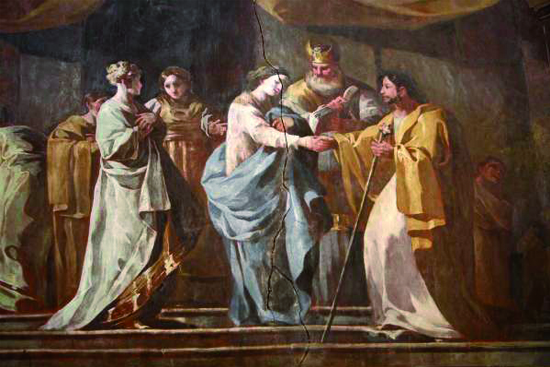Cartuja de Aula Dei

Between 1772 and 1774 Goya carried out the decoration of the Church of the Cartuja de Aula Dei, a magnificent example of late Gothic.
Goya created eleven scenes on the walls of the nave, under the base of the dome of the church. The technique used was oil on the wall where he used alla prima strokes which, together with the colour, achieves outstanding volume of the subject, together with very lively colours in part influenced by Venetian painting studied during his trip to Italy. The personages are treated with much sobriety and with voluminous folds in their clothing so that the human figure becomes the protagonist as opposed to the landscape and architecture.
The paintings remain in the place where they were created; Goya was aware of the architectonic space of the church and adapted each of the scenes to the place it was to occupy.
Currently this cycle of the life of Our Lady is divided into seven scenes: The Revelation to Saint Joachim and Saint Anne, The Birth of Our Lady, The Betrothal of Our Lady, The Visitation, The Circumcision of Jesus, The Presentation of the Child Jesus in the Temple and The Purification of Mary and the Epiphany as four disappeared due to the abandonment of the building when the Order had to abandon the Charterhouse as a result of the disentailment of Mendizábal. Due to this reason, on viewing the paintings conserved, it is evident that some areas were repainted at the beginning of the XX century by the Buffet brothers, who also redid the murals which had not been saved.
More information can be found here







